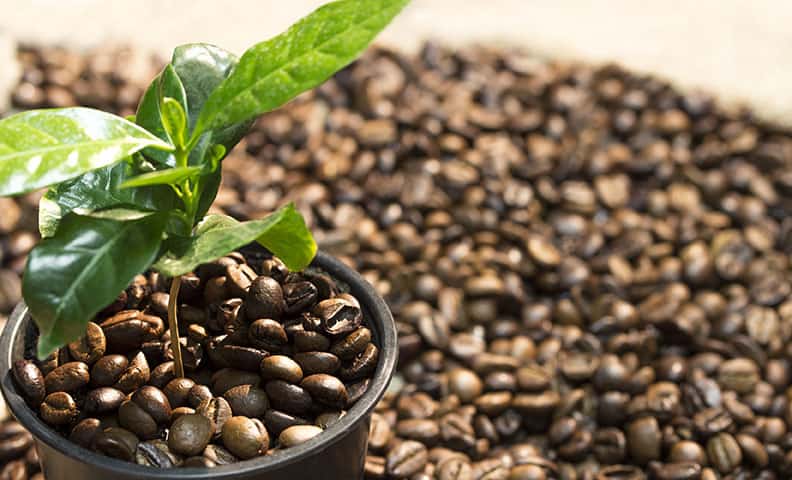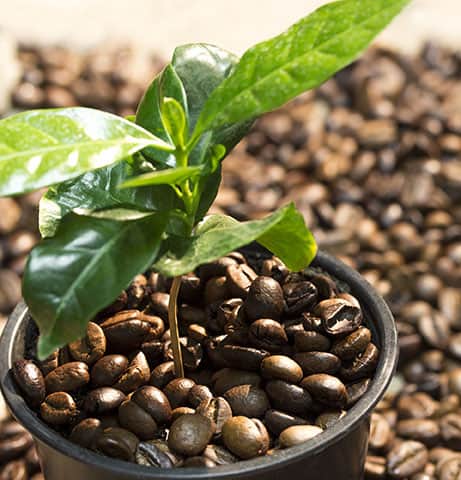
Have you ever considered growing your own coffee plant at home? Not only is it a fun and rewarding project, but it also provides the opportunity to enjoy a fresh cup of coffee made from your very own beans. While growing a coffee plant at home requires patience and care, the process is relatively straightforward if you follow the right steps.
In this guide, we’ll explore everything you need to know about growing a coffee plant at home—from selecting seeds or a young plant to harvesting and roasting your own coffee beans.
Step-by-Step Guide to Growing a Coffee Plant at Home
1. Choose a Coffee Plant or Seeds
You can start your coffee-growing journey in two ways: by buying a young coffee plant from a nursery or online retailer or by starting from coffee seeds, which require more time and care. If you choose seeds, purchase fresh, high-quality ones and plant them in moist, well-draining soil. A young plant, however, gives you a head start on growth.
2. Select the Right Pot and Soil
Choosing the right pot is essential, as coffee plants need room for root growth. A large pot with drainage holes prevents waterlogging and root rot. The soil should be nutrient-rich and well-draining, ideally an acidic mix similar to that used for azaleas. When planting, gently transfer a young coffee plant from its original container into the new pot, ensuring fresh soil surrounds the roots. If starting from seeds, plant them once they have sprouted and water them thoroughly.
3. Provide Proper Light and Temperature
Coffee plants thrive in bright but indirect light. Avoid placing them in direct sunlight, which can scorch their leaves. The ideal temperature range is between 60°F and 80°F (15°C–27°C). If temperatures drop below 45°F (7°C), the plant may suffer damage.
4. Watering and Humidity
Maintaining the right moisture balance is crucial. The soil should be consistently moist but never waterlogged. Allow the top inch of soil to dry out between waterings to prevent root rot. Because coffee plants thrive in high humidity, misting the leaves regularly or using a humidity tray can help maintain an ideal environment.
5. Fertilizing
Coffee plants benefit from regular feeding. During the growing season (March through October), fertilize every 4-6 weeks using a balanced, water-soluble fertilizer. In winter (November through February), reduce fertilization to once a month. Over-fertilization can cause leaf browning, so adjusting based on your plant’s appearance is advised.
6. Pruning and Maintenance
Regular pruning helps keep the coffee plant healthy and encourages bushier growth. Remove yellowing leaves and shape the plant as needed. Also, watch for pests like spider mites or aphids and treat them promptly to keep your plant thriving.
Arabica vs. Robusta: Which Coffee Plant is Best for You?
There are two main types of coffee plants grown at home: Coffea arabica and Coffea robusta. Arabica plants are more delicate, grow slowly, and require careful attention. However, their beans are widely regarded as superior in flavor, with a well-balanced profile of fruity, nutty, and chocolatey notes. Robusta plants grow faster, are hardier, and contain nearly twice the caffeine of Arabica beans. Their flavor tends to be more bitter and earthy. If you prefer smooth, complex coffee, Arabica is the better choice. If you enjoy bold, strong coffee with high caffeine content, Robusta may be more suitable.
Comparison of Arabica vs. Robusta Coffee Plants
| Feature | Arabica (Coffea arabica) | Robusta (Coffea robusta) |
|---|---|---|
| Growth Rate | Slow | Fast |
| Care Level | High maintenance | Hardy, low maintenance |
| Caffeine Content | Lower (1.2%) | Higher (2.2%) |
| Taste Profile | Smooth, fruity, complex | Strong, bitter, earthy |
| Best for Home Growing | Yes (preferred) | Possible but less common |
Coffee Plant Care at a Glance
To help you maintain your coffee plant, here’s a quick reference guide:
| Care Factor | Requirement |
| Temperature | 60-80°F (15-27°C) |
| Light | Bright, indirect sunlight |
| Watering | Keep soil moist, but not waterlogged |
| Humidity | High (mist regularly) |
| Fertilization | Every 4-6 weeks (March-October), once a month (Nov-Feb) |
| Pruning | Regularly for bushy growth |
Harvesting and Roasting Your Home-Grown Coffee Beans
Growing coffee requires patience, as a coffee plant typically takes 3-4 years to bear fruit when grown from a young plant. Once the coffee cherries turn bright red, they are ready for harvesting. After picking, the cherries must be processed by removing the seeds, fermenting, and drying them before they can be roasted. Roasting can be done at home using an oven or a dedicated coffee roaster, allowing you to enjoy fresh, home-grown coffee.
Final Thoughts
Growing a coffee plant at home is a rewarding and educational experience, though it requires patience. While growing from seed can take up to 10 years, purchasing a young plant reduces the waiting time to just 3-4 years. Whether you choose Arabica for its smooth taste or Robusta for its high caffeine content, growing your own coffee plant is a fascinating and enjoyable process. If you’re ready to start, all it takes is the right care, a little patience, and a love for coffee to see your plant flourish.

